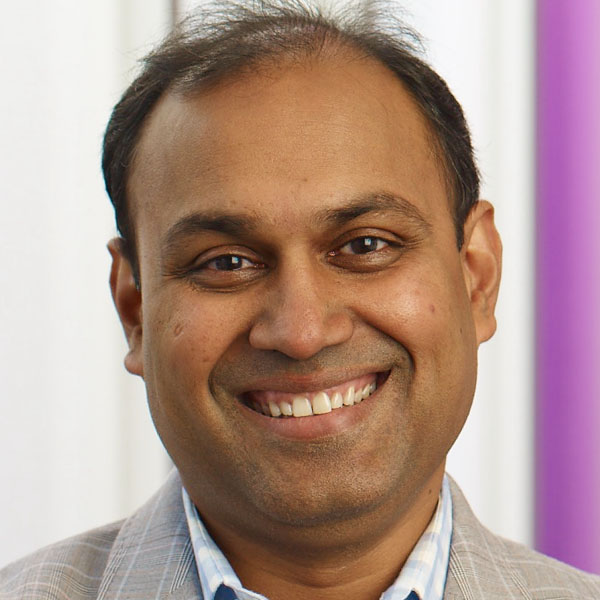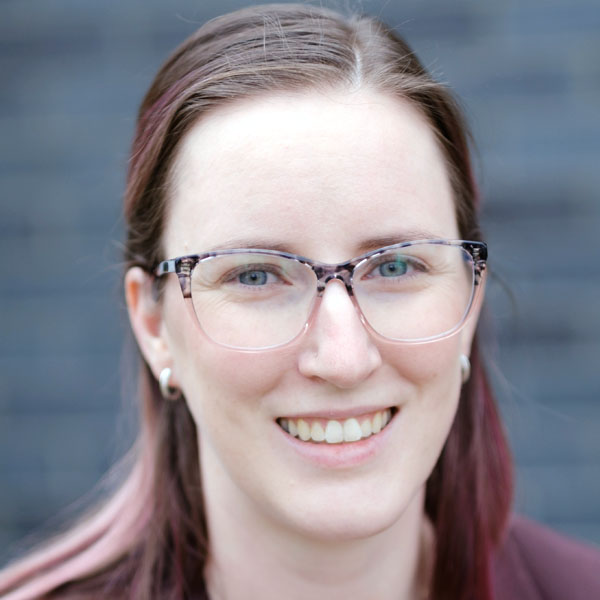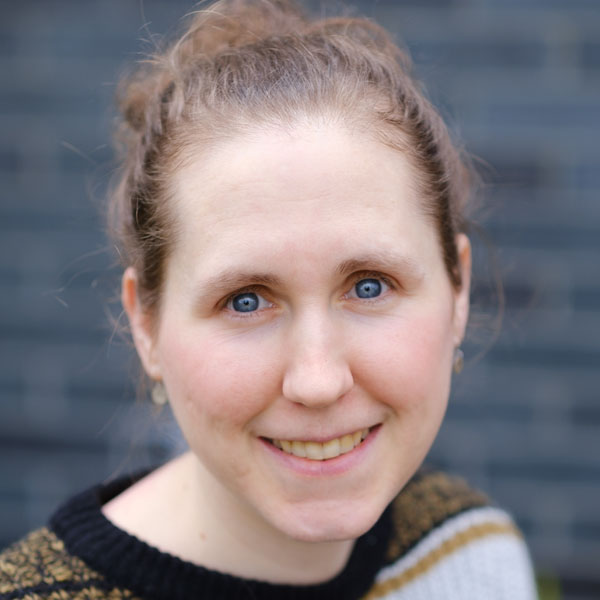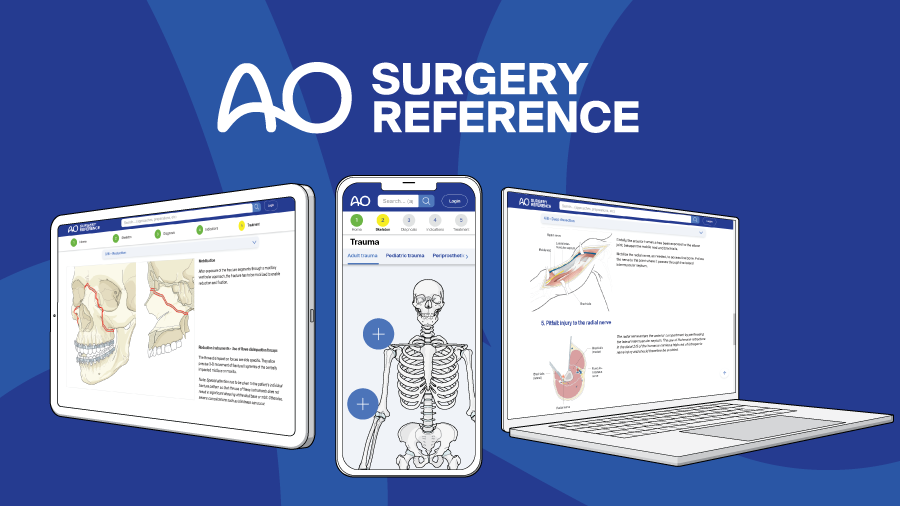PedORTHO: driving better evidence-based care for pediatric fractures
BY DR KISHORE MULPURI, DR ALEXANDER JOERIS, DR BRYN ZOMAR AND DR EMILY SCHAEFFER

One of the central challenges faced by pediatric surgeons and researchers is the lack of large-scale, international evidence on how to best treat fractures in children whose bones are still growing. The diversity of injuries, management approaches and patients leaves many questions unanswered and makes it difficult to determine with confidence what works best for each child—and each injury. We need a global approach to fill in these knowledge gaps.
-
Read the quick summary:
- The PedORTHO investigators explain a global registry designed to improve evidence for pediatric fracture care.
- PedORTHO will capture real-world global data to identify best pediatric fracture treatments and reduce practice variation.
- Surgeons can use this registry’s findings to benchmark care, refine indications, and guide evidence-based decisions for growing bones.
- Next steps include analyzing outcomes through 2026, publishing epidemiology and treatment data, and defining research hypotheses.
Disclaimer: The article represents the opinion of individual authors exclusively and not necessarily the opinion of AO or its clinical specialties.
From an orthopedic point of view, children are not simply little grown-ups. Bones that are still developing react in unique ways to injury and treatment. Their composition is different to that of adult bones, and they also heal differently. If a fracture occurs in the growth region near the end of a bone where the growth plates, or physes, are located, it can hamper that bone’s normal course of development or lead to permanent deformity.
Moreover, children and adolescents also differ from each other depending on their age: a two-year-old is different from a six-year-old, who in turn is different from a 16-year-old. They all require different treatment approaches. Above all, surgeons must ensure to preserve the growth plates and not harm them. On the other hand, because bones have the capacity to remodel while they still grow, we can allow certain deviations in terms of outcome, which would not be acceptable in adults whose bones have lost this ability.
Because there is such a wide variety in terms of injury types, management approaches and not least patients, many aspects remain unknown about the best treatments for orthopedic trauma in skeletally immature patients. No real global consensus has been established on what approach delivers the best clinical results and long-term outcomes for many pediatric fractures. Even in cases where most physicians agree that surgery is the only option—such as in significantly displaced fractures around the elbow—there sometimes is little agreement on the best surgical technique.
Tracking pediatric fracture care around the world
With the PedORTHO study, which is currently underway and funded by the AO Foundation via the AO Trauma network, we aim to tackle these significant knowledge gaps by helping to answer open questions. A prospective, multicenter observational registry, PedORTHO collates comprehensive data on pediatric orthopedic trauma from diverse healthcare settings.
We want to better understand the variability in how these fractures and hip dislocations are being treated around the world. This will allow us to compare different management approaches for these injuries according to where in the world the patients are as well as the outcomes—not just in the global north, but around the globe. We can investigate the variability by center as well as by country, and directly compare how the patients do afterwards.
Our goal in the long term is to build a registry which includes all fractures according to the AO pediatric fracture classification (AO PCCF). However, to establish proof-of-principle and study feasibility, we have limited PedORTHO to a specific subset of orthopedic injuries in pediatric patients: fractures of long bones such as the proximal and distal humerus, proximal radius, forearm shaft, and tibial shaft as well as traumatic hip dislocation.
The findings of the PedORTHO registry could lead to the conclusion that a specific fracture surgical treatment shows a better outcome than non-surgical treatment, and a follow-up study could compare different surgical treatments.
Truly global enrollment across all continents
With approximately 1,000 children having joined PedORTHO at 17 participating healthcare sites in twelve countries on all six continents, we have successfully completed the enrolment phase. For each child, a set of robust, standardized data has been collected on their injury as well as on the kind of treatment they have received.
For the next 18 months or so, we will be collecting data on our patients’ recovery during any follow-up visits they attend according to their local standard of care. Apart from clinical data, we use questionnaires to determine how patients are recovering up to two years after their initial treatment. For instance, we ask them—or their close family members—how the affected limbs are functioning, whether they have had any problems since their treatment and what their quality of life is like overall.
What is unique about PedORTHO is its large global scope and the focus on patient and parent reported outcomes. Most research in pediatric trauma relies on smaller sample sizes or is retrospective in nature. It will include data from countries as diverse as Chile, Ghana, India, Venezuela, the United States, Germany and Croatia, among others. This allows us to collate a very broad base of data to then formulate specific hypotheses for potential future research.
Real-world data from every practice environment
PedORTHO is very much rooted in the real world. It is not a rigid clinical trial conducted under strictly controlled conditions to investigate efficacy. Instead, we have designed PedORTHO as an observational cohort study that investigates effectiveness by gathering real-world data from a diverse range of healthcare settings. After all, treatments such as the application of a cast are not uniform—they very much depend on treatment approach, materials, setting and the practitioner’s preferences and experience.
We let clinicians use their standard approach with some criteria that we set out, and we assess the results. This approach may introduce variability, but it is precisely this diversity that will make our findings highly important and more generalizable. When a particular treatment approach demonstrates good results across multiple, varied settings, we can be more confident that it will work well in many different real-life situations, and not just under ideal trial conditions. This perspective is crucial for a truly global understanding of pediatric fracture care.
Building high-quality data across varied clinical systems
One of the main challenges to do with involving healthcare sites from many different countries—and not just from the so-called developed world—is related to research resources. A lot of centers simply do not have research staff. Others have never done any research before.
Recruiting centers from such a wide variety of settings therefore requires careful planning and ongoing support. Before a center is selected, our team assesses whether it has the necessary resources and commitment, including staff resources and capacity to follow patients over the long term. Once a center becomes part of the study, all the data is continuously monitored by the AO to ensure that it is reported and entered accurately and consistently and to quickly eliminate any issues.
After all, in some cases, it is the surgeons themselves who collect the data for us, and their time is much more limited than it would be for someone who has been hired explicitly to run a research study. In order to mitigate potential negative impacts this may have on data quality, a close monitoring and regular and frequent contact with the hospitals is important.
Above all, we have to safeguard the integrity of every single piece of data, and thereby the integrity of our prospective registry itself. We take all these steps to ensure that once the process is finished, our data can be easily compared regardless of where it came from.
Elevating patient-reported outcomes in pediatric trauma
One of the strengths of PedORTHO, and a relatively unique aspect, is the fact that a significant portion of the data we collect following treatment is based on the individual perceptions of the participants themselves. These patient-reported outcome measures have been validated for the age groups we are investigating. Some of them have been validated for many different languages, and we can apply them to the majority of our participants. Others are not yet available in more than a few different languages, so we can only apply them to children who speak, for example, English or German.
In times in which resources are limited and value-based health care gains more and more importance, we believe that they are very valuable and just as valid as outcome measures that are ostensibly more objective.
Also, what matters most is what matters to the patient, and how they themselves perceive their journey from treatment to rehabilitation. We saw this in a separate pediatric study that is about to be published, which in some ways was the role model for this research. It compared different treatment methods for femoral shaft fractures in children from birth until the closing of the growth plates, and one of the most surprising outcomes was that although the clinical outcomes for different treatment methods were similar, there were distinct differences in how they were perceived by the young patients as well as by their parents.
We believe that this is a very important aspect that we will have to focus more on in the future, not only in research for children or adolescents, but also for adults: in the end, it is most important what matters to the patients and how they perceive the treatment and the final outcome. Subjective outcome measures will therefore be as important in the future as objective clinical measures, or maybe even more important—especially when it comes to value-based healthcare approaches.
Local to global, back to local—global insights strengthen local pediatric care
PedORTHO embodies the spirit of globalization in healthcare by bringing together data from diverse local contexts around the world. This “local to global, back to local” approach means that lessons learned from many settings—each with their unique resources and practices—are shared globally, then adapted back to improve care locally.
Interestingly, this global exchange often challenges assumptions about what is supposedly the “best” treatment. In highly developed healthcare systems, there can be a tendency to intervene more aggressively than necessary—to fix every fracture with the most advanced techniques available. However, this approach overlooks the human body’s natural healing potential, especially in children whose bones remodel remarkably well.
PedORTHO gives us an opportunity to rediscover simpler, sometimes less invasive methods by learning from global experiences—methods that might be overlooked if we focus only on the most technologically advanced care. In the past, taking a wider perspective in this way has frequently shown that effective, less aggressive treatments can come from unexpected places, helping refine and improve pediatric fracture care everywhere.
Uniting pediatric orthopedic experts worldwide
Unfortunately, many orthopedic surgeons still tend to want to treat children the same as adults. You might even say that children are neglected sometimes because they cannot advocate for themselves. In order to change that at a global level, we need to make more and better evidence available to the orthopedic and pediatric communities. The basis of that is solid research conducted globally.
As a pioneer in orthopedic education and outcomes as well as multi-center collaboration, and as an institution that routinely brings together experts from around the world, AO Trauma is the perfect forum for a feasibility study like PedORTHO. The AO has been very helpful in terms of recruiting healthcare centers from around the world, and it has also taken on the task of monitoring the collected data for accuracy and quality.
Early findings and future research directions
We are currently processing the baseline data on demographics, injury types and management approaches that we have collected from our participants up until their treatment. Even before the full outcomes are available, these early results will allow us to publish important epidemiological data on the types of fractures that occur in these age groups and on the treatment modalities that are being used. We expect to share these first insights hopefully in the course of 2026.
Our mission is to provide real-world data that helps pediatric patients everywhere get the safest, most appropriate, and most effective fracture care. Only with strong evidence can we give surgeons—and families—the best information to guide clinical decisions and recovery.
About the authors:
Kishore Mulpuri, MBBS, MS(Ortho), MHSc(Epi), FRCSC, is the Head and a Professor of the Department of Orthopaedics at the University of British Columbia (UBC) and a Pediatric Orthopaedic Surgeon at the British Columbia Children’s Hospital (BCCH). He completed his medical and orthopaedic training at Kasturba Medical College in Manipal, India, prior to pursuing orthopaedic fellowships at the Women’s and Children’s Hospital in Adelaide, Australia, the Melbourne Orthopedic Group, and Royal Children’s Hospital in Melbourne, Australia. Dr. Mulpuri also completed a clinical research fellowship in orthopaedics at BCCH.
His clinical practice and research interests focus on the pediatric hip and cerebral palsy. He co-leads the Hippy Lab at BCCH and co-founded the Hip Hope Network, a growing global network of hip health professionals, with Dr. Emily Schaeffer. Dr. Mulpuri is a Principal Investigator of the ongoing PedORTHO study.
Bryn Zomar, MSc, PhD, is a Research Associate in the Department of Orthopaedics at the University of British Columbia (UBC). Dr. Zomar first joined the Hippy Lab in 2021 as a postdoctoral research fellow and transitioned into her current role as Research Associate in 2024.
She holds a Master of Science in Kinesiology and a PhD in Health and Rehabilitation Science from the University of Western Ontario. Dr. Zomar is the co-scientific lead of the Global Pediatric Implant Safety and Efficacy (POISE) Registry and the SCFE Longitudinal International Prospective (SLIP) Registry. She is also a Co-Investigator of the ongoing PedORTHO study.
Emily Schaeffer, PhD, is an Assistant Professor in the Department of Orthopaedics at the University of British Columbia (UBC) and the Research Director for the Department of Orthopaedic Surgery at British Columbia Children’s Hospital (BCCH). Dr. Schaeffer first joined UBC and BCCH in 2014 and was recently appointed as an Assistant Professor in July 2025. She holds a PhD in Experimental and Molecular Medicine from Dartmouth College.
For more than 10 years, Dr. Schaeffer has worked closely with Dr. Kishore Mulpuri to develop and expand their pediatric hip research program – the Hippy Lab. Much of her work has focused on the creation and expansion of the Hippy Global Registry Program, which includes the Global Hip Dysplasia Registry (GHDR) and the SCFE Longitudinal International Prospective (SLIP) Registry. She also co-founded the Hip Hope Network – a growing global network dedicated to improving hip health worldwide. Dr. Schaeffer is a Co-Principal Investigator of the ongoing PedORTHO study.
Alexander Joeris, MD, MSc, is the Head of Medical Scientific Affairs at the AO Innovation Translation Center (AO ITC). A trained pediatric surgeon specializing in pediatric traumatology, Dr. Joeris first joined AO in 2012 as a clinical research fellow. In early 2013, he began his work with AO Clinical Investigation and Documentation.
He holds a Master of Science in Health Economy, Policy, and Management from the London School of Economics. Since January 2023, he has served as an honorary Assistant Professor at the University of Missouri, Columbia, Missouri, USA. Dr Joeris is also a Co-principal Clinical Investigator of the ongoing PedORTHO study.
You might also be interested in...
AO Trauma Course—Managing Pediatric Fractures
An interactive learning environment based on clinical experience to demonstrate, apply, and discuss the principles and techniques of today’s fracture management in children and adolescents.
AO Surgery Reference: Pediatric Trauma
AO Surgery Reference is a resource for the management of fractures, based on current clinical principles, practices and available evidence.
AO Foundation research grants
Learn about AO's research grant funding opportunities. Detailed information on the geographic scope, eligibility criteria, and research focus areas is available in the individual guidelines for each call.
AO Innovation Translation Center (AO ITC)
Empowering surgeons to improve patient care through activities such as gathering clinical needs, collaborating with experts, delivering solutions, and generating evidence.








